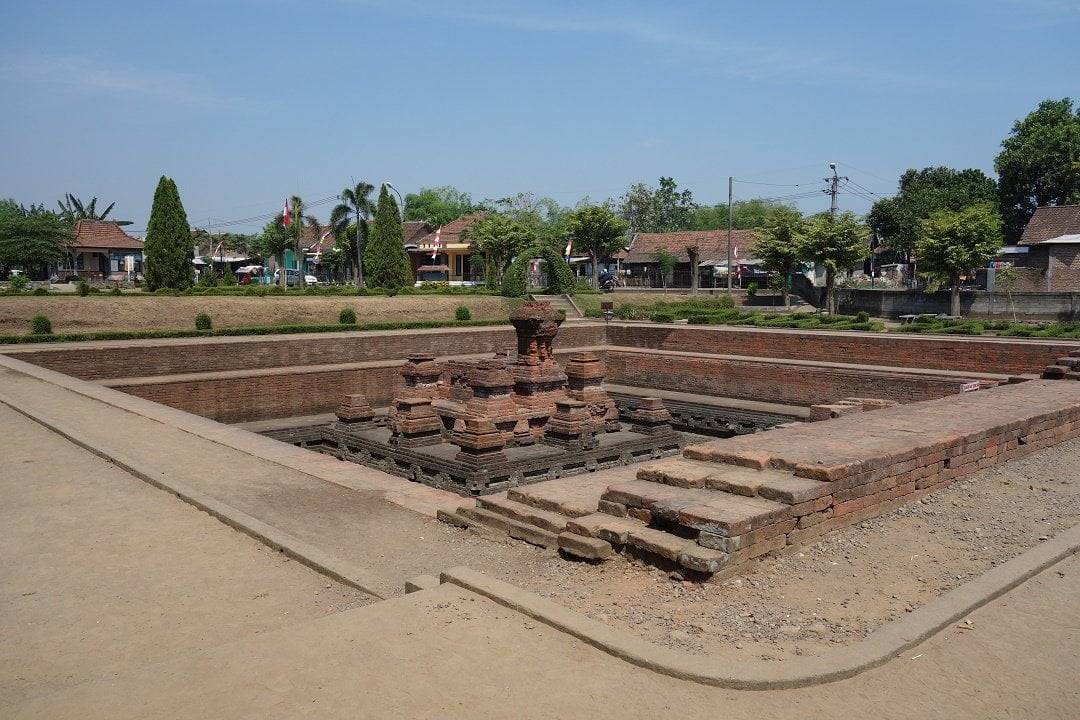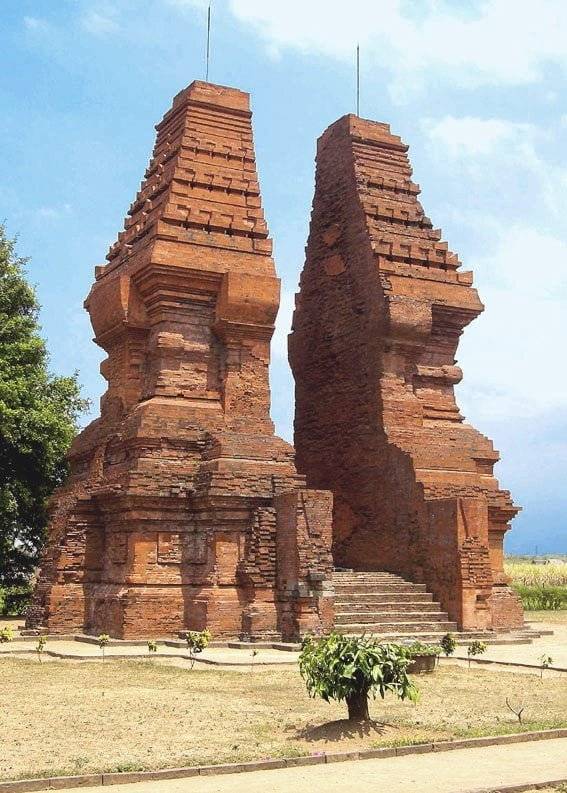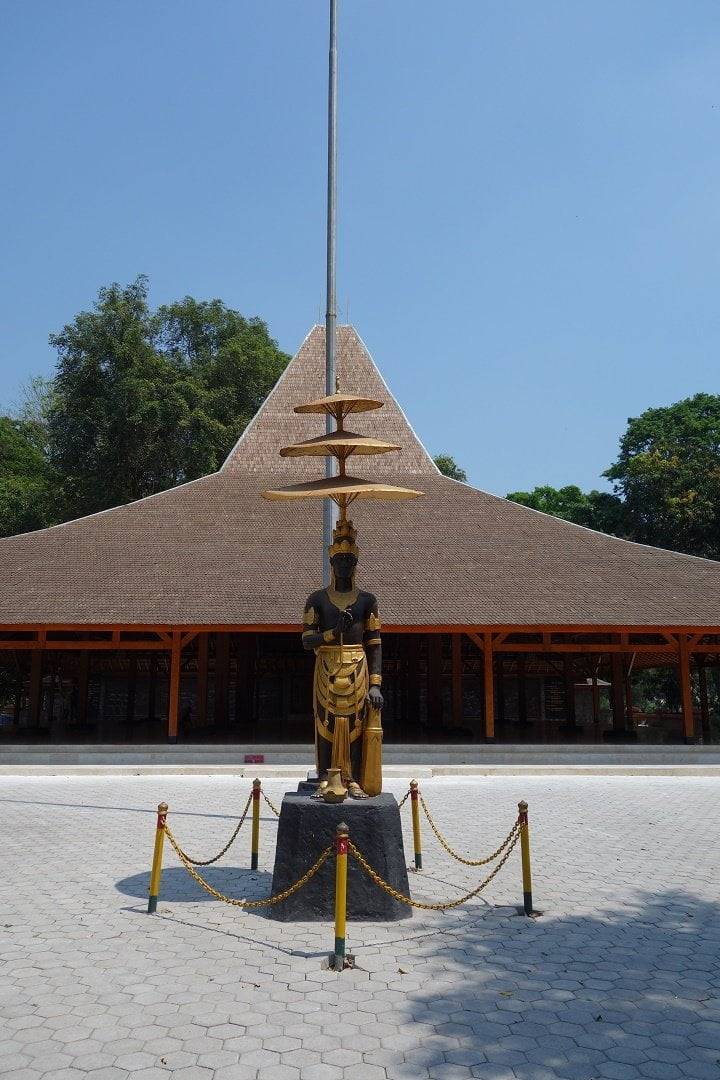Visiting Trowulan and the Ruins of the Majapahit Empire

Last Updated on November 5, 2022
Java is famous for its many Hindu ruins, especially for its two UNESCO world heritage sites: Borobudur and Prambanan Temples. But the Hindus left much more behind, East Java is a goldmine for ruins from ancient civilizations. Trowulan is a less known site near Mojokerto, hence not many tourists make the trip there, but it’s definitively worth a visit if you want to discover the forgotten Majapahit Empire.
You can start your day by visiting the Trowulan Museum, learning more about the history of the Majapahit Empire, and seeing many artifacts found in the area. The easiest is to stay in Mojokerto and either rent a bike for the day or hire a local guide to take you to the main sites.
Related – Must-know before planning your trip to Indonesia
HELPFUL WEBSITES TO HELP YOU PLAN YOUR TRIP
HELPFUL WEBSITES TO HELP YOU PLAN YOUR TRIP

Disclaimer: this post contains affiliate links, which means that if you click on any links and make a purchase I’ll get a small commission, at no cost to you.
History of the Majapahit Empire and its capital, Trowulan
The ancient capital of the Majapahit empire was the biggest Hindu kingdom in Indonesia’s history. Back then, it was known as Wilwatikta. Built at the end of the 13th century by Prince Wijaya, the capital reached its peak in the 14th century under King Hayam Wuruk. It used to receive tributes from all over Indonesia and also some parts of the Malay peninsula. They controlled the region’s spice trade and exported rice.
The religion was a mix of Hinduism and Buddhism, and Islam was tolerated, some Muslims even were part of the royal court.
The Majapahit empire fell apart in the 15th century when the Muslims from the Demak empire, in the north, invaded. The capital was mostly destroyed, the Hindus fled to the east and settled their new capital in Kediri. Muslims took over and slowly conquered all of Java, forcing the Hindus to go to Bali.
Trowulan Ruins
The ruins were rediscovered in the 19th century by the British governor of Java, a long process of excavation and renovation then started. The buildings were made of really brittle red clay bricks so today most of the old structures are gone, but a couple of monuments have been rebuilt, and others are still being excavated.

Trowulan Museum
Most of the remaining carvings and sculptures can be found at the museum, as some artifacts, utensils, and pottery. The museum gives a lot of explanations about the history and culture of the Majapahit empire. It’s a good place to start Trowulan’s visit.
Tikus Temple
Among some of the best-preserved monuments is Tikus Temple, which used to serve as the queen’s bath for rituals and cleansing. Tikus means mouse in Bahasa Indonesia, the archaeologists gave it this name because when they first discovered it, it was full of mice. During the rainy season, the bath is full of water, but in the dry season, it’s empty. It’s one of the biggest structures found.


Bajang Ratu
Another important site would be the gateway of Bajang Ratu, the highest monument left standing, with its impressive carvings.
Wringinlawang gate
The Wringinlawang gate used to be one of the main gates of the city, it’s also one of the first gates of this style ever made. In this area, only the gate remains, the other structures have been destroyed and were too damaged to restore.


Candi Brahu
Candi Brahu, in Bejijong village, is one of the few remaining temples, it’s believed that the kings’ cremation took place on this compound and that the temple served as a shrine for the deceased kings.
Pendopo Agung
Pendopo Agung or great hall, built with a traditional Javanese style in the 60s by the army, is a replica of the hall built around the same place during the Majapahit era. It served as an artistic hall where locals watched various performances and ceremonies. Now it’s more of a memorial. Behind it is Java’s oldest Muslim cemetery, with some of the graves dating as far back as 1376. Muslim tombstones are also found nearby at Troloyo village.


The site is yet to reveal all of its ruins, as some still remain buried under mud and volcanic debris due to the frequent floods and eruptions. Walking around the countryside and the rice fields, it’s frequent to encounter some red bricks scattered about.
What else to do around Mojokerto
Maha Vihara Mojopahit is a brand new temple, famous for its impressive sleeping Buddha, the area around is nice for a stroll. The temple entrance is only for devotees, but the park around is open to the public.
There are also some nice waterfalls around the city, and you can do rafting in Pacet in the Kromong river.

How to plan your visit to Trowulan
Don’t expect to find most of the sites on your own; you can either hire a guide if you have your own vehicle or you can hire a driver for the day. You can arrange for transportation in Mojokorto and for a guide at the museum.
You can easily arrange a day trip from Surabaya or choose to spend the night in Mojokerto; there’s not much to do there though.

Like it? Save it for later:
















